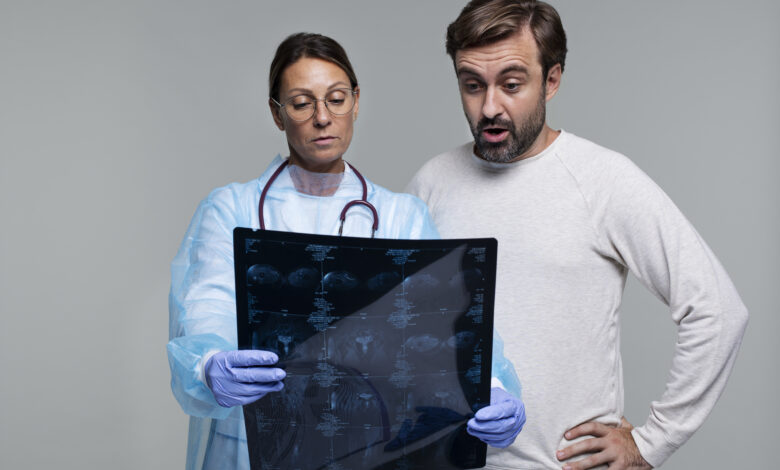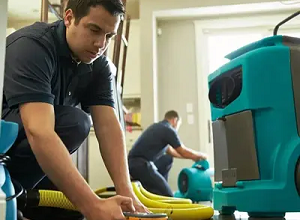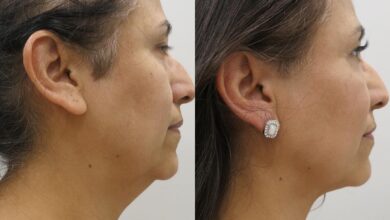
What are X-rays used for at an urgent care facility?
Urgent care centers are crucial in providing immediate healthcare services for non-life-threatening conditions. One of the essential diagnostic tools available at these facilities is the X-ray. X-rays, a form of electromagnetic radiation, are pivotal in diagnosing and managing various medical conditions. In this article, we delve into the applications of X-rays at urgent care centers and how they contribute to efficient patient care.What Vitamin Deficiency Causes You to Feel Cold?
Understanding X-Rays
X-rays are electromagnetic radiation that can penetrate various materials, including human tissue. The technology works by emitting X-ray beams that pass through the body and are captured on a detector, creating an image. Different tissues absorb different amounts of radiation, resulting in a contrasting image highlighting bones, organs, and other structures. This diagnostic tool is widely used in medical settings, including urgent care facilities, for its ability to visualize the body’s internal structure quickly and non-invasively.How to Raid a Group Chat in Teams
Common Uses of X-Rays in Urgent Care
- Fracture Diagnosis
One of the most common uses of X-rays at urgent care centers is diagnosing fractures. X-rays provide a clear image of the bone structure, whether it’s a broken arm from a sports injury or a sprained ankle. This enables healthcare providers to quickly identify any breaks or fractures, ensuring patients receive the appropriate treatment, such as casting or splinting.
- Identifying Respiratory Conditions
X-rays are also instrumental in diagnosing respiratory conditions. For example, a chest X-ray can reveal signs of pneumonia, bronchitis, or other lung infections. This is particularly useful for patients with cough, fever, and shortness of breath. By examining the lungs and chest cavity, urgent care physicians can determine the severity of the infection and decide on the best course of treatment.
- Assessing Abdominal Pain
Abdominal pain can have various causes, from gas and constipation to more severe conditions like kidney stones or bowel obstructions. X-rays help evaluate the abdominal area, providing images that can reveal blockages, abnormal masses, or signs of intestinal issues. This assists in making an accurate diagnosis and guiding the treatment plan.
- Detecting Foreign Objects
Patients, especially children, might ingest or insert foreign objects into their bodies. X-rays can detect these objects, which is crucial in deciding the following steps, whether a simple retrieval or a more complex procedure. Detecting foreign bodies promptly can prevent complications and reduce patient anxiety.
- Dental Issues
Urgent care centers often treat patients with acute dental problems. X-rays identify issues such as impacted teeth, cavities, and infections. These images help plan treatments like tooth extractions or root canals.
Benefits of Using X-Rays at Urgent Care
Speed and Efficiency
One of the primary advantages of using X-rays in an urgent care setting is the speed at which results can be obtained. Unlike some diagnostic tests, which require samples to be sent to a lab, X-rays provide immediate images that can be analyzed on the spot. This allows for quicker diagnosis and treatment, reducing patient wait times and improving overall care.
Non-Invasive Diagnosis
X-rays are non-invasive, meaning they don’t require any incisions or invasive procedures to obtain an image. This is particularly beneficial for patients anxious about medical procedures, as it minimizes discomfort and potential complications.
Wide Range of Applications
The versatility of X-rays allows urgent care centers to diagnose a broad spectrum of conditions. From broken bones to respiratory infections and dental issues, X-rays are a multi-functional tool that supports various medical specialties.
Limitations and Considerations
While X-rays are beneficial, it’s essential to be aware of their limitations and considerations. For instance, X-rays involve minimal exposure to radiation. Healthcare providers, especially pregnant women and young children, must weigh the benefits against the risks. Additionally, X-rays may not always provide enough detail to diagnose certain conditions, necessitating further imaging tests like CT scans or MRIs.
Frequently Asked Questions
Q: Are X-rays at urgent care as accurate as those in a hospital?
A: Yes, the X-ray equipment and technology used in urgent care centers are comparable to those in hospitals. Urgent care facilities have state-of-the-art machines and employ trained radiologists to ensure accurate diagnoses.
Q: How long does getting X-ray results at an urgent care take?
A: The results of an X-ray are typically available within minutes. The images are usually reviewed by a radiologist or physician on-site, allowing for a quick diagnosis and the initiation of treatment.
Q: Is it safe to get multiple X-rays?
A: While X-rays involve radiation exposure, levels are generally low. Healthcare providers take precautions to minimize exposure, and the benefits of accurate diagnosis and treatment often outweigh the risks. It’s essential to discuss any concerns with your healthcare provider.
Q: Can children get X-rays at urgent care?
A: Yes, children can receive X-rays at urgent care centers. The staff is trained to handle pediatric patients, and the equipment is calibrated to deliver the appropriate radiation dose for children.
Final Thoughts
X-rays are an indispensable tool in urgent care, offering a swift, non-invasive way to diagnose various conditions. Their ability to provide immediate results plays a crucial role in the timely management of patients, ensuring that they receive the necessary care without delay. However, it’s essential to understand the limitations and use X-rays judiciously to balance the benefits against the potential risks.
Additional Resources
For more information on the use of X-rays in medical settings, visit the following resources:





